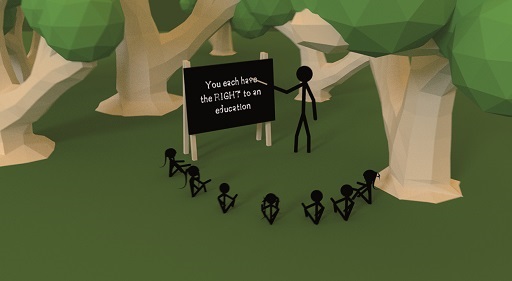4 The rights-based model
Many international conventions and declarations enshrine the right to education. For example, Article 26 of the UN Universal Declaration of Human Rights (United Nations, 1948) states that everyone has the right to education which should be free in the elementary stage. The UN Convention on the Rights of the Child (UNICEF, 1989) extended this right by stating that all children should be eligible to go to secondary school. From this perspective, education is a right – that is, a moral or legal entitlement to have or do something, and an end in itself, rather than the means for achieving other ends. As such, governments should be expected by their citizens to find resources to offer a quality education to each child.
Activity 3 Exploring the rights-based model
Watch this two-minute animation in which we outline the rights-based model for you. It is worth watching the animation two or three times to ensure you have a good understanding of the model so that you can consider its implications for education. You should make notes as you watch, as you will return to reflect on this model later in the course.

Transcript
Think about:
- What are the important aspects of the rights-based model for education?
More about the rights-based model of education
Agencies such as UNESCO and UNICEF base their programmes on this model. At school level, the rights-based model is acknowledged by a concern with democratic schools, learner participation, removal of corporal punishment and involvement of the local community in the school.
Critics of the rights-based approach argue that despite nations and states saying that they accept every child has a right to education, many make no attempt to turn such aspirations into reality. The model may be interpreted as simply stating that it is a child’s right to receive a decent education but may pay insufficient attention to inclusion, diversity and equity, and the model does not of itself enable detailed planning to take account of specific socio-cultural contexts and the needs of particular learners.
